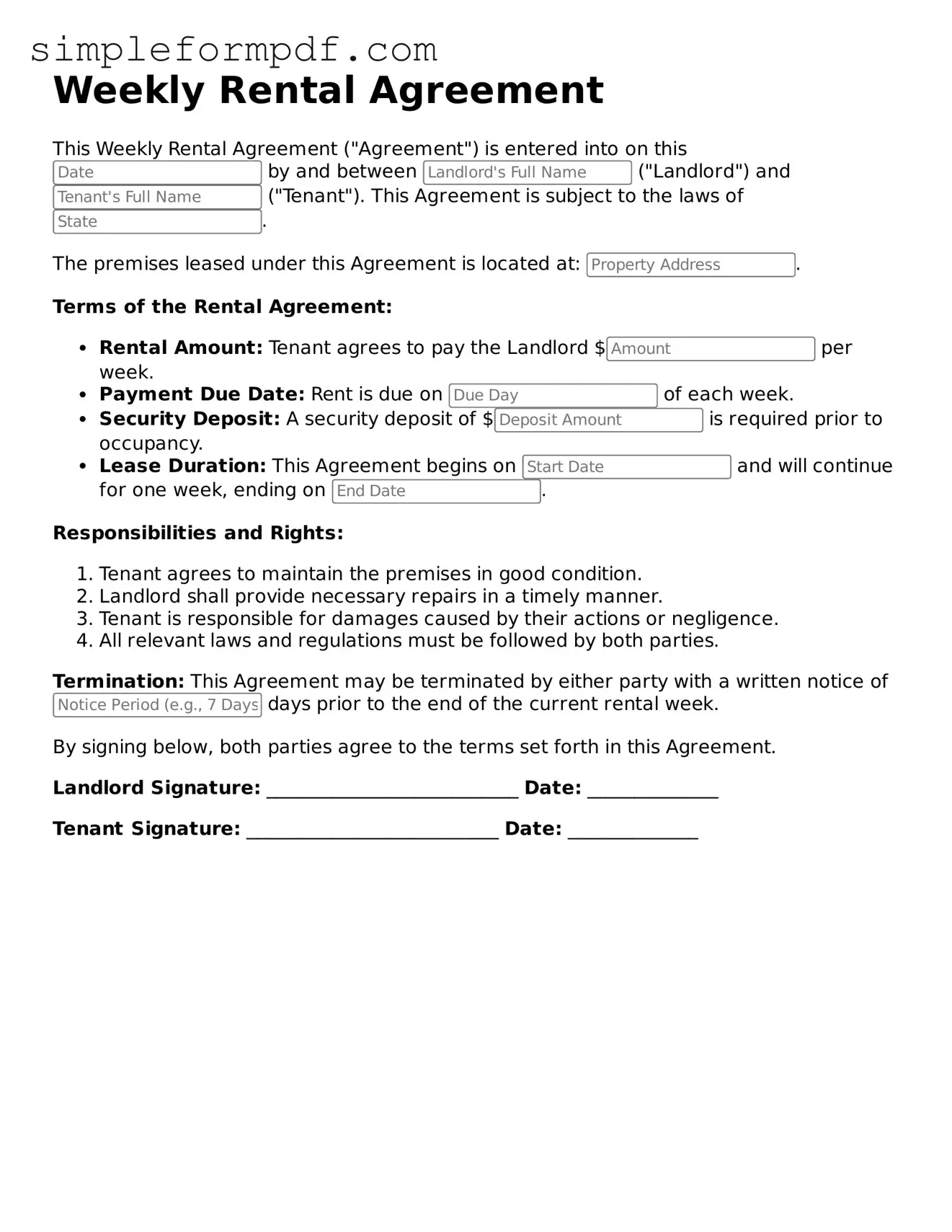Fillable Weekly Rental Agreement Template
The Weekly Rental Agreement form is a legal document that outlines the terms and conditions for renting a property on a weekly basis. This agreement protects both the landlord and the tenant by clearly defining responsibilities, payment details, and other essential information. To get started, fill out the form by clicking the button below.
Launch Editor
